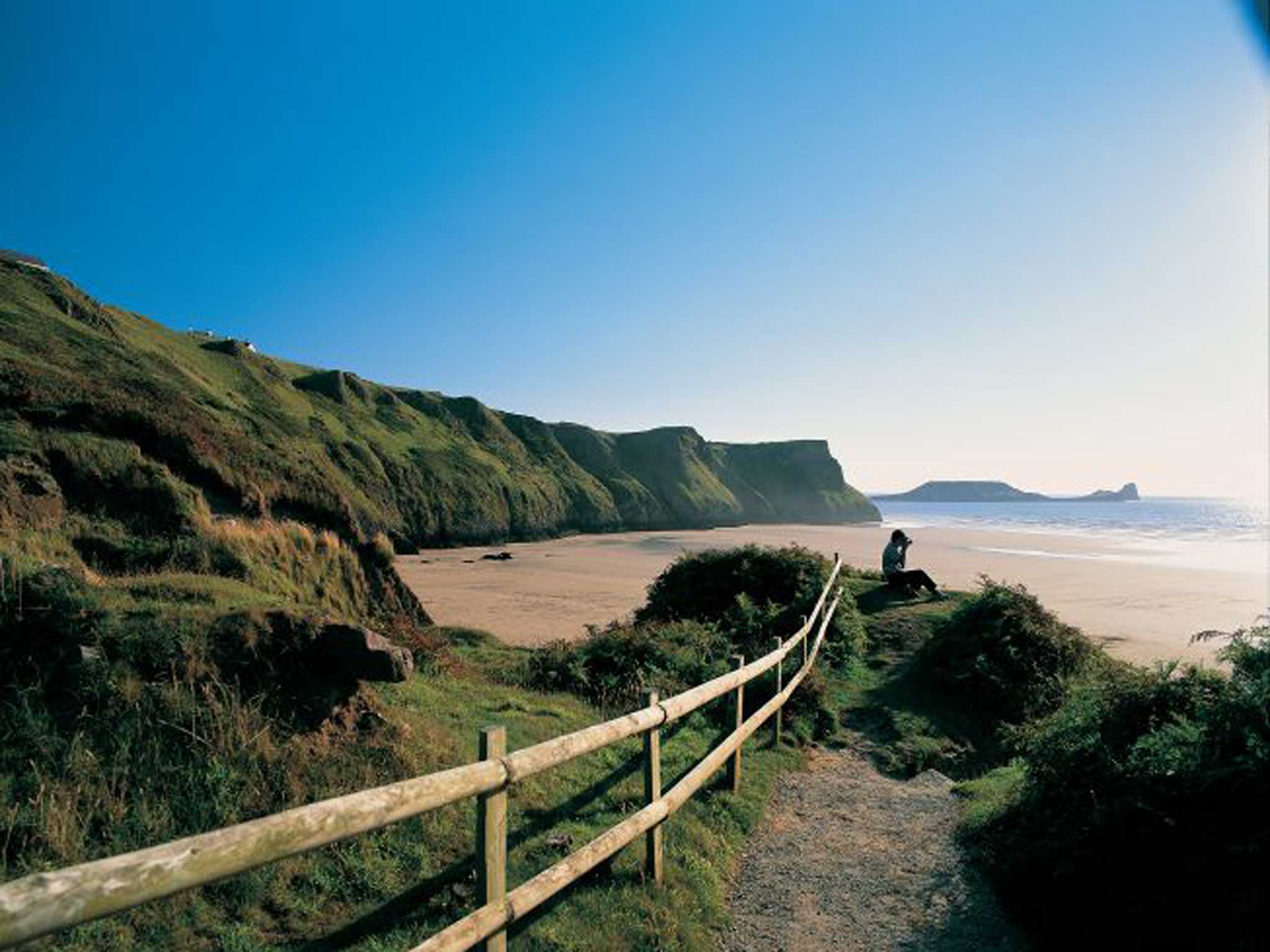
A handful of regions in Britain pack such varied habitat into such a petite area that prioritising wildlife-watching locations can be challenging. The Gower Peninsula, Britain's first Area of Outstanding Natural Beauty, is one. One way to enjoy the gamut of habitat is to allocate a half-day to each of three thrilling reserves.
Oxwich Bay is a neat introduction. East of the car park, the dune slack flora is stunning. Round-leaved wintergreen and dune gentian nestle among a horde of orchids, including thousands of common twayblade and pyramidal orchids, and scores of bee orchids. In scrubby areas bordering reedbeds, yellow flag irises entice the eye and Cetti's warbler heralds the ear.
Spend the afternoon west along the undercliffs between Port Eynon and Worm's Head, searching for limestone plants that occur at few other British sites. At the base of the cliffs, there is thrift, spring squill, sea stork's-bill, rock samphire and buckhorn plantain. The beach at Port Eynon holds sea stock. Among the birds, you will not fail to see raven, but keep an ear out for the cawing of a relative that has recently recolonised Gower: chough. Another returnee is the peregrine, seduced by seabird colonies at Worm's Head.
A single Gower day cannot suffice, so spend an additional morning at Whiteford Burrows. Flora is similar to Oxwich, but the dunes are larger, wilder and more bountiful. Your botanical targets are dune gentian, round-leaved wintergreen, variegated horsetail and the adder's-tongue fern. Gower butterflies include both the tiny and timid (small blue) and the big and bold (dark green fritillary).
A Gower dune speciality that you are unlikely to see is fen orchid, recorded from both Oxwich and Whiteford but probably now locally extinct. Fortunately, this enigmatic plant persists at Kenfig, just off Gower, so head there for the afternoon. The orchid's luminously pale green needles underpin a whirl of delicate white flowers.
Finish the weekend a short way back towards Swansea. Britain's largest arachnid (7cm from toe to toe), the fen raft spider, walks on water thanks to its hairy legs. Strikingly striped, this invertebrate frequents only three sites nationwide. Along the southern edge of Pant-y-Sais Fen, look for nursery webs in greater tussock sedge, between the towpath and the peaty Tennant Canal.
This is an edited extract from '52 Wildlife Weekends' by James Lowen, published by Bradt. IoS readers can buy a copy for just £7.79 (inc UK p&p) by visiting bradtguides.com and using the discount code 52WW. Offer valid until 31 Jan 2015
Join our commenting forum
Join thought-provoking conversations, follow other Independent readers and see their replies
Comments